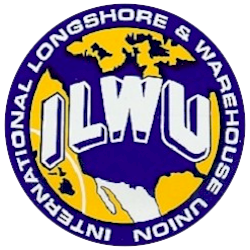
Unofficial ILWU Local 19
History & Education

Unofficial ILWU Local 19
History & Education
War on the Waterfront
Get the Facts!!!
Mr. Reith and the business owners have concentrated their attacks on a
couple of main issues. These issues are dealt with below, including the
sources that we got the figures from. Mr. Reith and Mr. Howard make
consistent comparisons between Australian ports and those overseas. What
needs to be born in mind is that these comparisons are not comparing apples
with apples. Here's why:
Australian ship turnaround rates are not comparable with the busiest ports
(Rotterdam, Singapore) simply because we don't have as many cranes.
Singapore allocates 5 cranes to each ship. Most Australian ports do not even
have 5 cranes (Port of Singapore Authority)
Taking a container off one ship and placing it on straight onto another in
one movement (called transshipment) counts as two container movements. This
doesn't happen often in Australia because our ports are not big enough, nor
do they have the right equipment.
Therefore,
comparing figures between ports with different equipment is grossly
misleading. About 10% of container movement in Australia has capacity for
trans-shipment; the ports Reith compares us to have up to 90%.(Tim Blood,
P&O Containers Business Manager)
You will often hear talk about container rates per hour. Containers come in
two sizes, 20 foot and 40 foot. So, the number of conatiners moved per hour
is not, in itself, a useful bit of information. What is more useful is
knowing the total amount of volume that is moved. This figure is expressed
as TEU, or Twenty foot Equivalent Units.
When this
unit is used as a measure, Australian ports are vastly better than what
Reith and co claim; up to 22 TEU per crane per hour in some ports. This
compares favorably with Singapore (the world's best port) at 24. Comparing
TEU with containers per hour is like comparing inches with centimeters.
And what about the so-called wharfie reports? The average number of hours
worked by Australian wharfies is 55hrs per week. The wharves workforce has
been reduced by 57% since 1989. Coupled with this, there has been very
little investment in any new equipment that would allow productivity to
rise.
These factors
combined mean that substantial overtime must be worked. This is why their
salaries are inflated. The base salary of an MUA member is $35,000. But
guess what? The non-union workers now employed by Patrick are on contracts
worth $46,000 a year!
The effect on Australia ? Contrary to media reports, the costs incurred on
the wharves are not crippling the country. In one study prepared by the
Office for Marine Safety and Port Strategy, it was found that stevedoring (wharve)
charges for a container shipped from LA to Sydney were only 3% of the total
cost of transport !!! Clearly, the wharfies are not holding the country to
ransom.
Wharfies,
like any of us, are entitled to fight to protect their jobs. As to the oft
mentioned monopoly on labour supply, this is nothing new. Professional
groups such as doctors and lawyers have been doing something similar for
centuries.
What can you do? In short, try to bring some balance to the debate. Tell
your friends the real story, write letters, call talkback. The dispute
engineered by Reith is about crushing a group of Australians who are
organized, committed and principled. They are simply trying to avoid
unemployment.
Don't be misled.